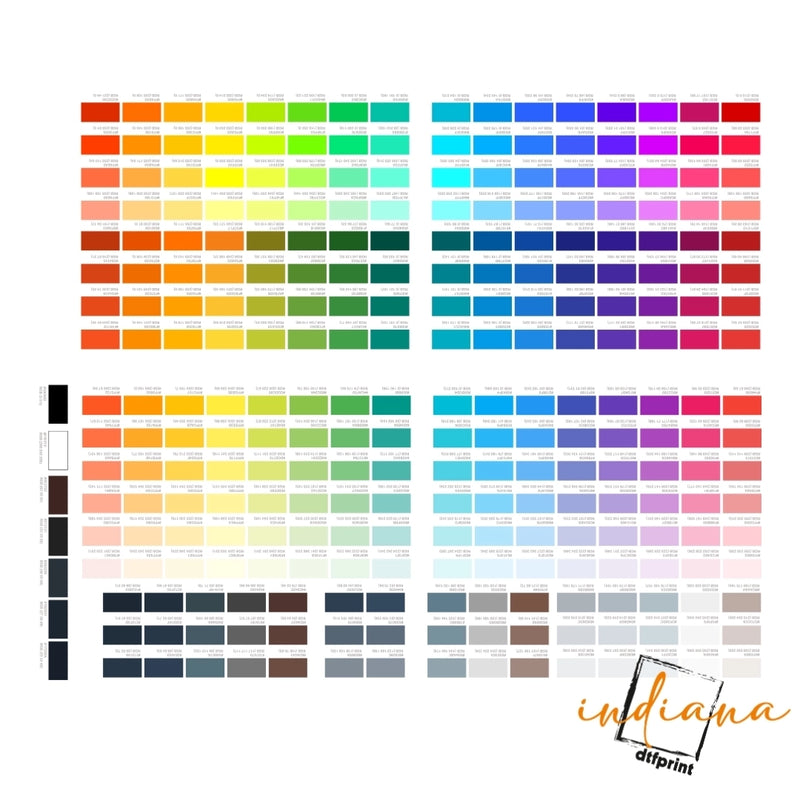Direct to Film printing is growing fast. More businesses are entering the custom apparel market, and one big question comes up early: Should you handle everything yourself or look into outsourcing DTF printing?
Both options have clear benefits and challenges. Deciding between building your own DTF setup and outsourcing depends on cost, time, and how much control you want. In this guide, we’ll explore the pros and cons of outsourcing DTF compared to handling it in house.
The Case for Outsourcing DTF Printing
Outsourcing means sending your designs to a professional print shop and having them handle production.
Pros of Outsourcing:
-
Lower startup costs: No need for a DTF print shop investment right away.
-
No equipment worries: Avoid the business overhead for DTF equipment like printers, powders, and heat presses.
-
Scalable production: Easily expand with the scalability of DTF printing options.
-
Professional results: Benefit from DTF control and quality advantages offered by skilled print shops.
Cons of Outsourcing:
-
Less control: You can’t oversee every step.
-
Timeline depends on vendor: The DTF printing production timeline comparison may show longer waits with outsourcing.
-
Cost per print: While upfront is cheaper, long term expenses may be higher.
The Case for Building Your Own DTF Setup
When you go in house, you buy the equipment and run the process yourself.
Pros of Building In House:
-
Full control: You manage every step for better DTF control and quality advantages.
-
Faster turnaround: No waiting on vendors; quicker DTF printing production timeline comparison.
-
Cost savings over time: Once set up, costs per print drop.
-
Creative freedom: Experiment with materials and methods.
Cons of Building In House:
-
High startup costs: Requires a big DTF print shop investment.
-
Ongoing overhead: Maintenance, ink, and business overhead for DTF equipment add up.
-
Steeper learning curve: Requires training and practice.
-
Risky at first: The startup DTF printing cost-benefit analysis may show losses until volume grows.
In House vs. Outsourced DTF Printing: Key Differences
-
Cost
-
Outsourcing: Lower upfront cost.
-
In House: High upfront but cheaper per print over time.
-
Speed
-
Outsourcing: Dependent on the supplier.
-
In House: Faster once setup is complete.
-
Quality
-
Outsourcing: Professionals handle the process.
-
In House: More control, but learning is needed.
This DTF production cost comparison helps decide which model fits your business.
DTF Business Setup Considerations
Before choosing, think about:
-
Order volume: Small orders may not justify building your own DTF setup.
-
Growth plans: If you expect high demand, in house might pay off.
-
Cash flow: Can you handle a large DTF print shop investment?
-
Flexibility needs: Outsourcing may be better for unpredictable work.
Balancing Scalability and Risk
If you’re testing a new brand, outsourcing gives flexibility. You avoid upfront costs while using the scalability of DTF printing options.
But if you already have a steady demand, the benefits of in-house DTF production may outweigh the risks. Owning equipment lets you adapt faster, meet deadlines, and keep margins higher.
Startup Cost vs. Long-Term Benefit
When comparing startup DTF printing cost-benefit analysis, outsourcing often wins in the short term. It’s low risk and flexible.
In the long run, though, in house setups can be more cost effective. If demand grows, DTF business setup considerations should lean toward owning equipment.
Which Path Fits Your Business?
There’s no single answer. Outsourcing works well for small shops, new businesses, or those testing the market. In house setups fit companies ready for long term commitment and volume growth.
The best choice depends on your budget, time, and growth plans.
Conclusion
The decision between outsourcing and in house comes down to control, cost, and growth goals. Outsourcing keeps risk low, while building your own DTF setup gives long term savings and creative control.
To explore reliable outsourcing options and learn more about quality DTF transfers, visit Indiana DTF Print.
FAQs
1. What is the main advantage of outsourcing DTF printing?
Outsourcing DTF printing lowers startup costs and avoids equipment expenses. It also provides access to professional print quality without the need for in house expertise or maintenance.
2. What are the benefits of in house DTF production?
The benefits of in house DTF production include faster turnaround times, more creative freedom, and cost savings per print over time once the initial setup costs are covered.
3. How do I decide between in-house vs outsourced DTF printing?
Compare your order volume, budget, and long term goals. Outsourcing is better for smaller, flexible needs, while in house works best for steady, high volume production.
4. What are the biggest costs in building your own DTF setup?
The largest costs come from printers, curing units, heat presses, and ongoing supplies. This makes the DTF production cost comparison important before investing.
5. Is outsourcing DTF scalable for growing brands?
Yes. Outsourcing offers scalability of DTF printing options, making it easy to handle both small and large orders without committing to equipment purchases or high upfront investments.











